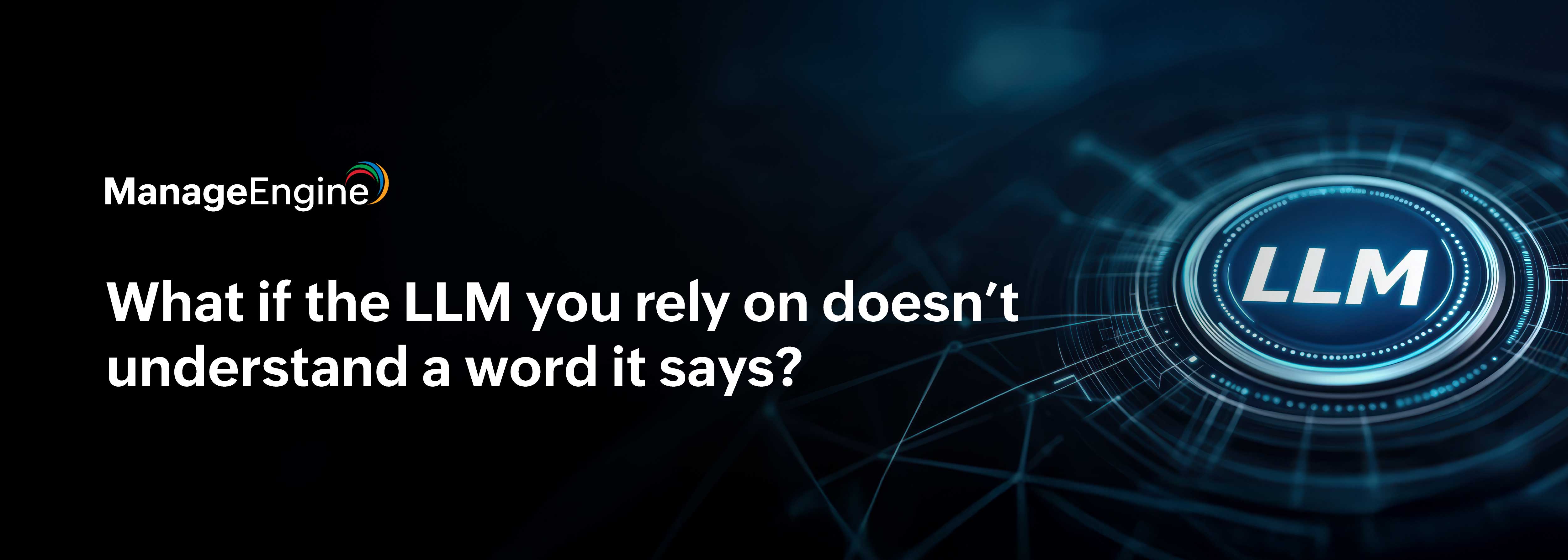66% of us use AI every day, but do we actually know how it works?

There’s a new kind of thinking happening in the world. It doesn’t come with memories, emotions, or doubt. It doesn’t hesitate. It doesn’t wonder.
However, it appears to be thinking.
Ask it a question, and it responds in perfect grammar. Ask for help, and it gives you options. You could almost believe it understands.
Almost.
This is what happens when machines are trained to speak like us, but without ever needing to understand us. These systems, known as large language models (LLM), aren’t intelligent in the way we are. But they’re built to sound like it.
So, that changes everything.
What is an LLM?
An LLM is an artificial intelligence system developed to read, interpret, and create text in a way that mimics human communication. It learns by analyzing enormous amounts of written content—books, websites, articles, and more.
LLMs don’t think or understand like humans. They don’t know what a word means. Instead, they predict what word should come next based on patterns they’ve seen before. It's like autocomplete, but far more powerful and complex.
A LLM can write poems, answer questions, summarize content, but at the core, they’re just really good guessers, not thinkers.
How does LLM learn?
LLMs don’t read like humans. Instead, they turn text into tokens, smaller parts of a sentence like words or pieces of words.
Example: Which is the tallest building? becomes: ["Which", "is", "the", "tall", "est", "building", "?"].
That's a key part, the model can’t understand words directly, so it turns each token into, vectors, using a process called embedding.
Think of it like giving every word its own unique fingerprint made of numbers.
Example: "Apple" becomes something like [0.12, -0.98, 1.07, ...]
This helps the model "sense" meaning based on how words are used in different contexts.
The model works using a neural network, specifically a transformer model, which processes information layer by layer. However, instead of thinking like a human, it learns by handling numbers that represent words.
When the model sees:
"The sun rises in the ___"
It tries to guess the next word (like morning). If it guesses wrong, it slightly adjusts its parameters, tiny internal values (billions of them) to improve for next time. This stage is called pretraining, where the model reads billions of examples to learn how language usually works.
After pretraining, the same model can be fine-tuned to write customer support replies. For example, if you train it on hundreds of polite responses like:
"I'm sorry to hear that. Let me help you with that issue."
The model starts learning how to sound helpful and professional in a support role.
So in short:
Pertaining = Learning general language by guessing next words
Fine tuning = Teaching the model to behave a certain way for specific tasks
While it sounds intelligent, it’s really just math and patterns at a massive scale.
How does LLM generate text?
If you type:
"The tallest building in the world is"
The model doesn’t “know” the answer like a person would. It looks at the sentence and tries to guess the next token. Based on patterns it saw during training, it might continue with:
"the Burj Khalifa."
Then it checks what token should come after that.
"It is located in..."
And so on, one token at a time, until the sentence feels complete.
This entire process is based on probability. The model calculates:
"Out of all the tokens I could use next, which one fits best right here?"
Can we control how it responds?
Yes. When generating text, you can use settings like:
Temperature:
Controls how predictable or creative the output is.
A low temperature (e.g., 0.2) gives safe, expected answers.
A high temperature (e.g., 0.8) lets the model be more unpredictable.
Top-p sampling (also called nucleus sampling):
This limits the model to choosing from only the most likely next tokens (e.g., top 90%), helping balance creativity and relevance.
Why understanding LLM matters
LLMs are no longer locked away in research labs, they're writing your emails, suggesting your replies, and shaping what you read online. That’s exactly why you should understand how they work.
They can hallucinate facts, make things up that sound real but aren’t. They might reflect biases from their training data. Also, they don’t understand real world context, which means they sometimes give misleading or harmful responses.
The key? Don’t treat them as experts. Use them as helpers, but always double check their work.
If you can't tell the difference between a confident guess and a true answer, you're not in control. The model is.
Learning how LLMs work gives you the power to ask better questions, spot weak answers, and use AI as a tool, not a crutch.
In a world where machines can sound human, being human means staying informed.